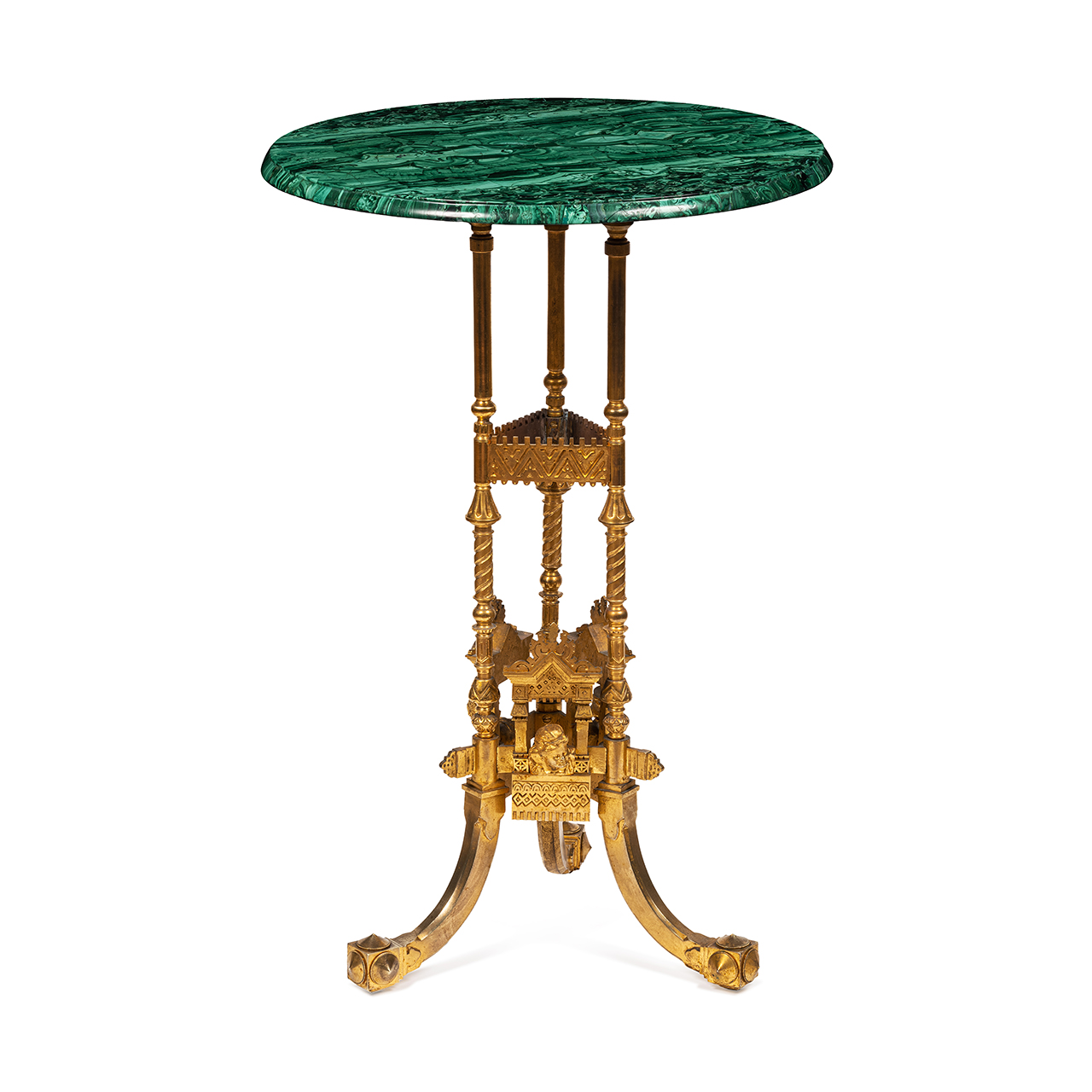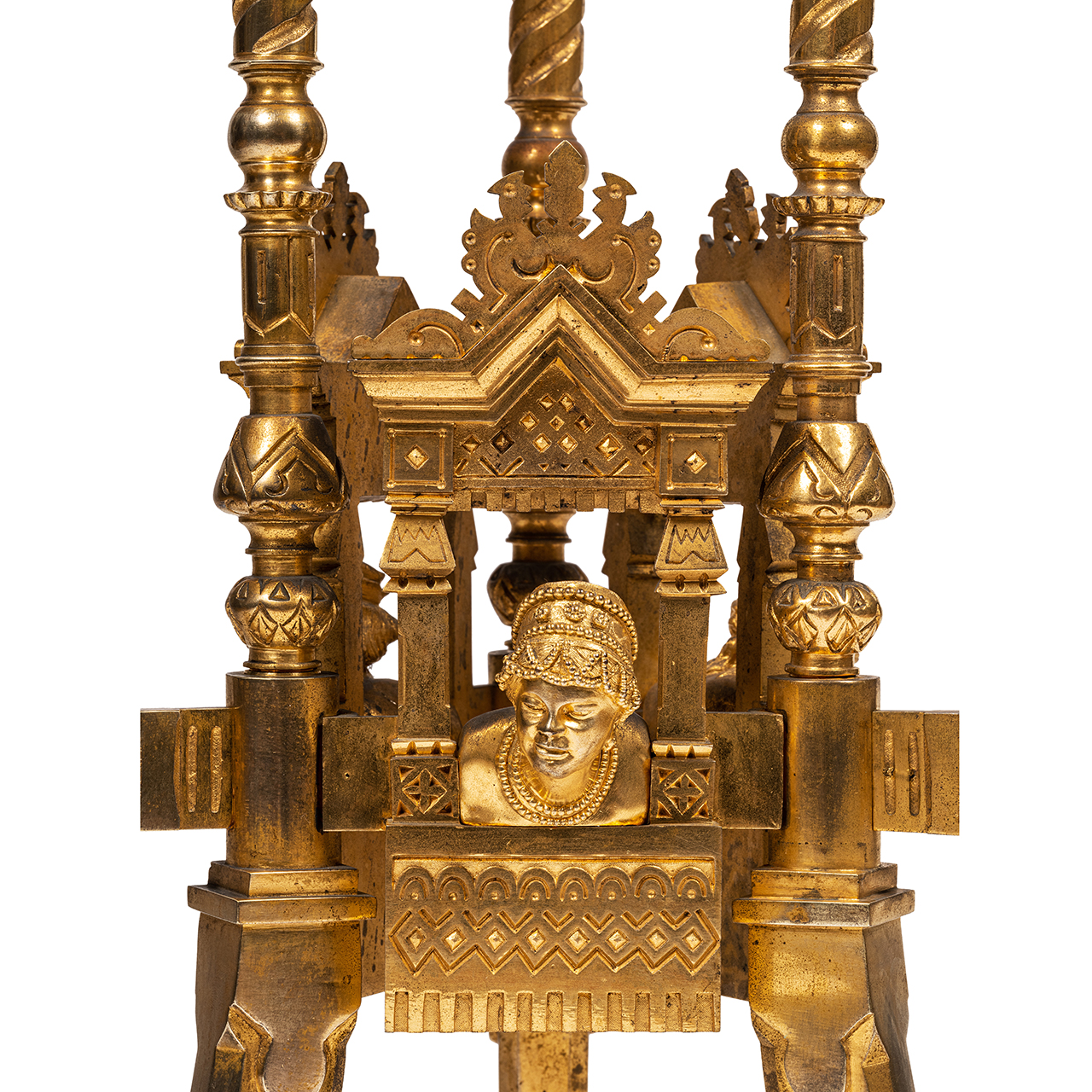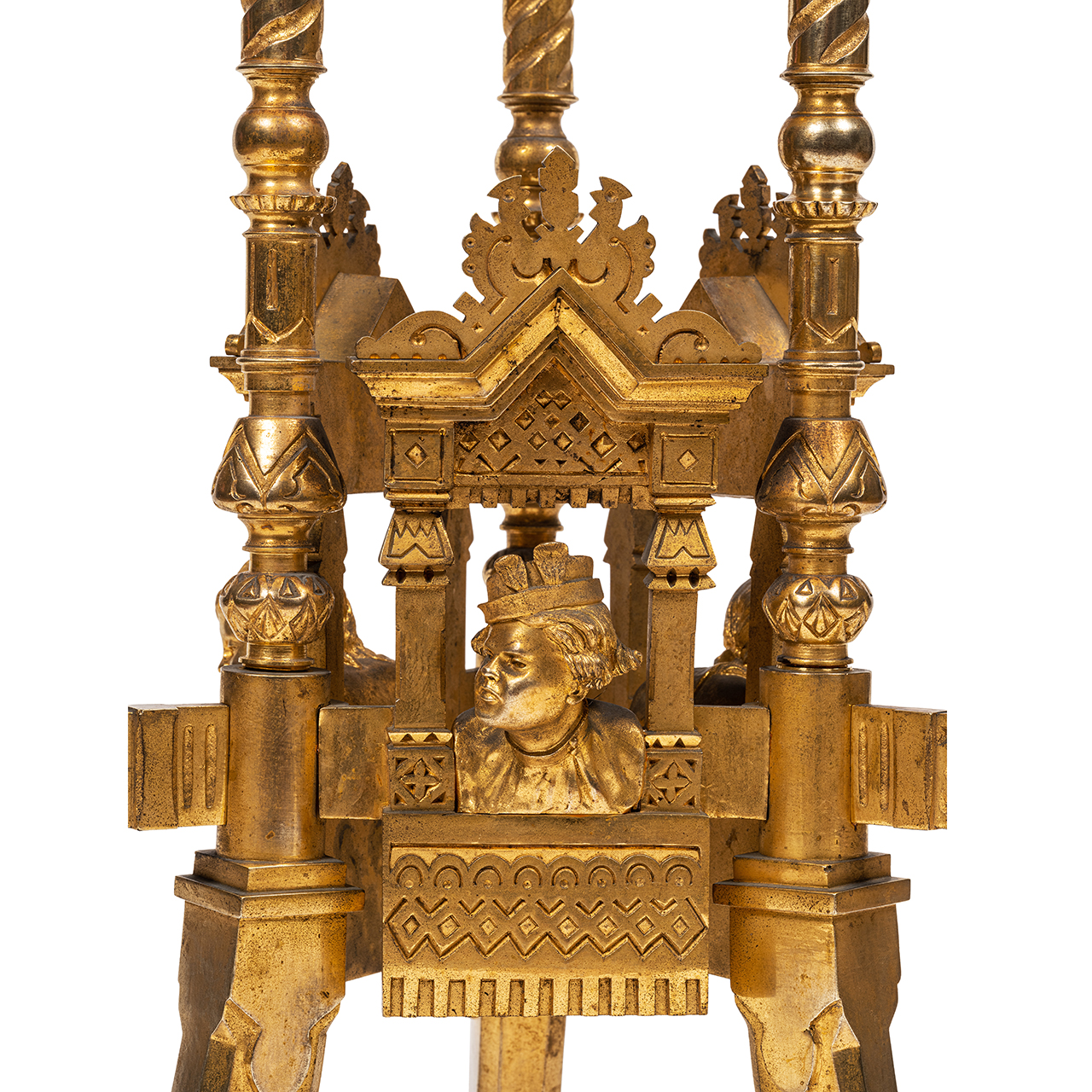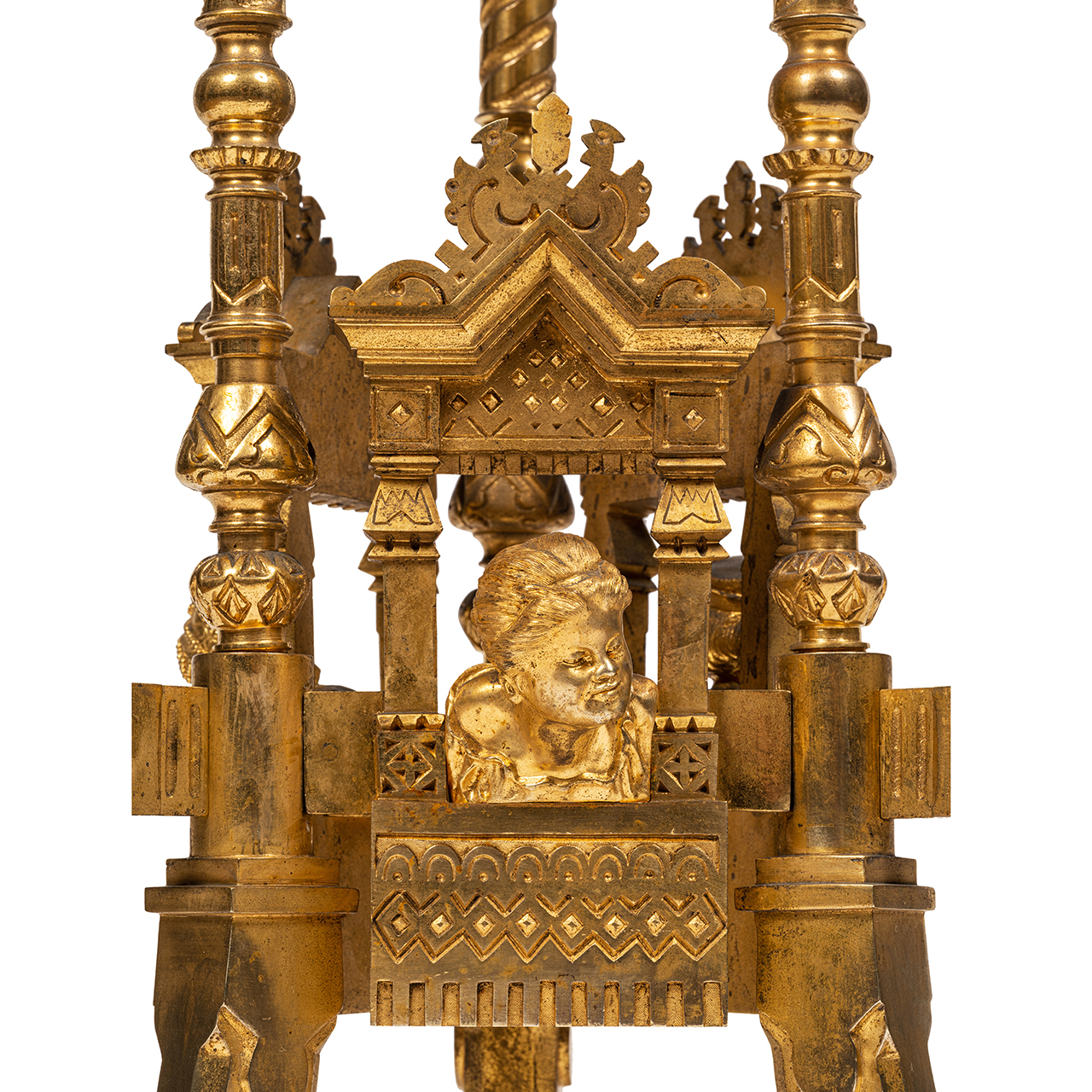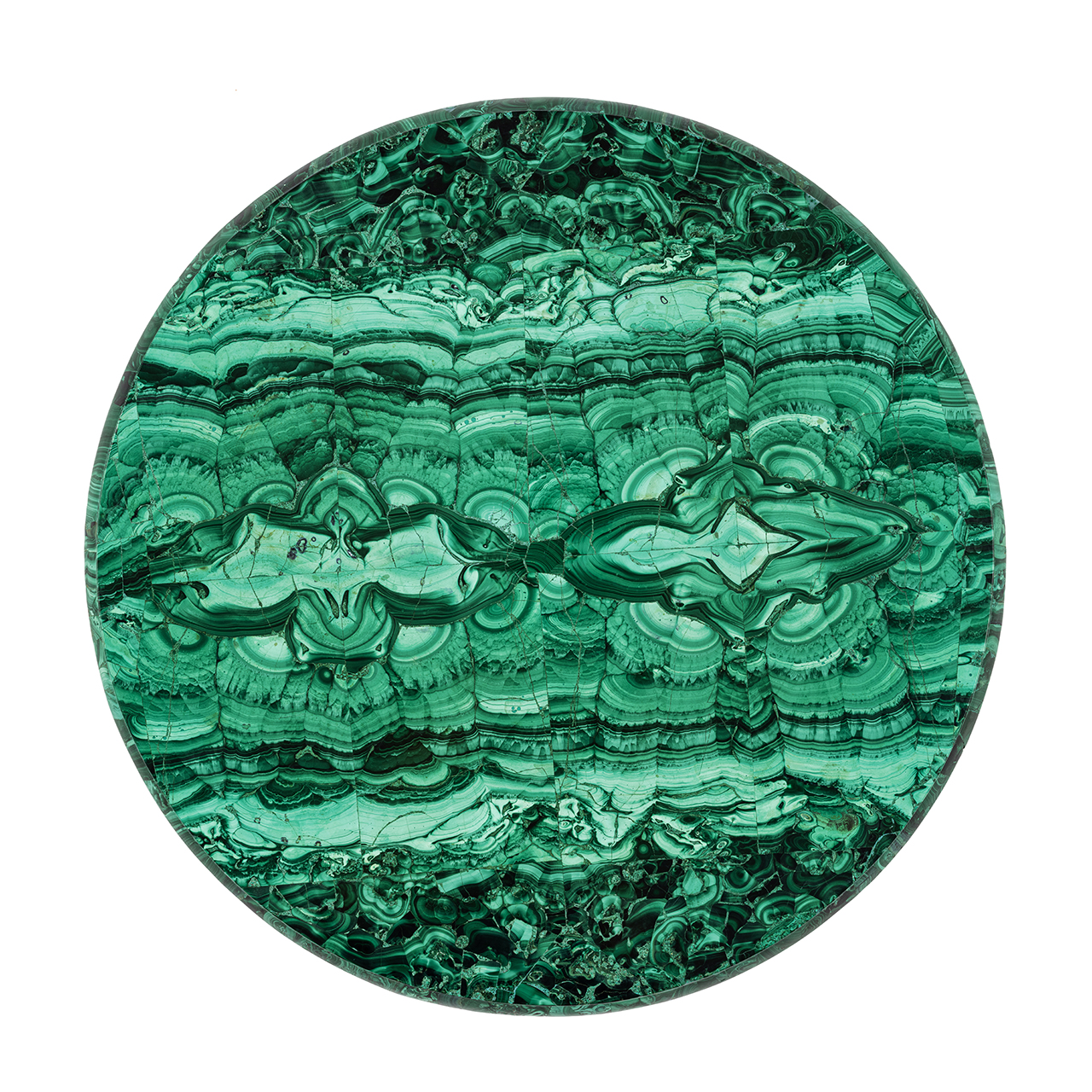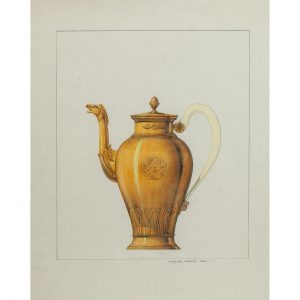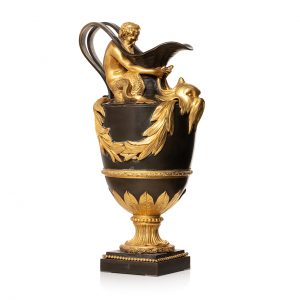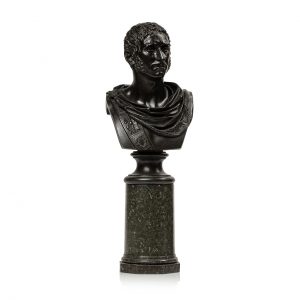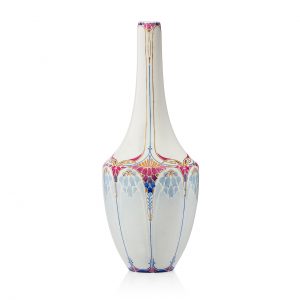A tripod gilt-bronze gueridon with finely chased Neo-Russian style decoration featuring three busted figures leaning out of an isba window, with its round Ural malachite veneer top.
Good overall condition, wear to the gilding in some places, slight chips to the malachite.
Russia, circa 1850-1880.
H. 78 x D. 52 cm.
- André Ostier Collection (1906-1994).
- French private collection.
This gueridon perfectly reflects the identity of the style known as "Neo-Russian" which flourished in the middle of the 19th century in Russia. This movement developed both in architecture and in the decorative arts and was characterised by a general increase in interest in the origins and motifs of ancient Russia. This interpretation and stylisation of the Russian architectural heritage led to the development of a profoundly national style, itself influenced by the Art Nouveau and Romantic movements of the early 19th century.
One of the major books of the Neo Russian style is the album "Motifs of Russian Architecture" published in St. Petersburg between 1874 and 1880 by Anatoly Reinbot. This monthly publication promoted the "Russian style" as a starting point for the development of modern national architecture. It depicts facades, sections, plans, furniture, gold, silver and porcelain works of art with a high degree of polychromy and a strong taste for folk art motifs (ill. 1).


